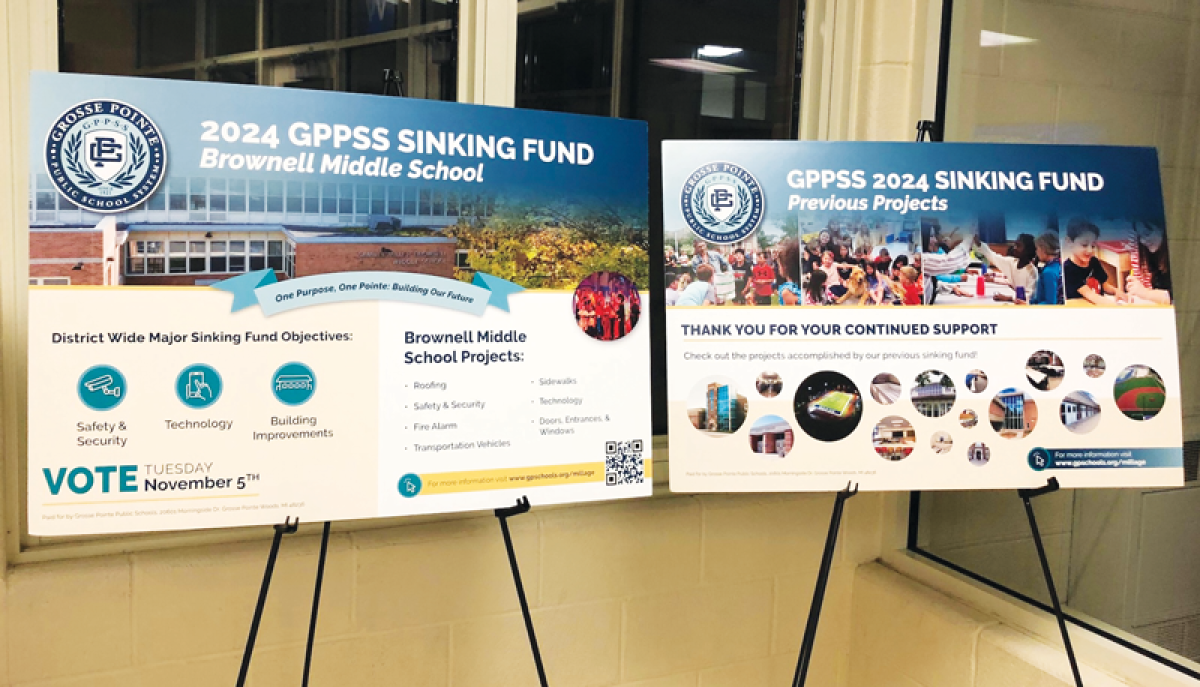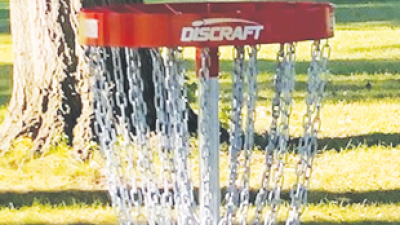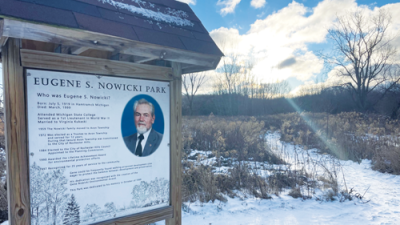GROSSE POINTES/HARPER WOODS — With aging buildings and substantial infrastructure needs, Grosse Pointe Public School System officials are seeking voter approval of a 10-year, 3-mill sinking fund levy this fall to pay for some of those expenditures.
The current five year, 1-mill levy will expire in December 2024. That millage generates roughly $3.5 million annually, but the Grosse Pointe Board of Education opted to ask for a larger millage this time because a 2022 capital assessment report found that the district needs more than $252 million worth of improvements. The 3-mill levy is expected to generate $11.1 million in its first year.
A sinking fund is different from a bond because, as the district explained in a brochure about the millage, sinking funds “do not require the added costs of debt service.”
In the GPPSS, the sinking fund is mainly used for facility needs, such as parking lots, building repairs, masonry, windows, playgrounds, new boilers and roofs.
“Sinking funds cannot be used for salaries. … They cannot be used for furniture,” GPPSS Superintendent Andrea Tuttle said during a July 16 Grosse Pointe Board of Education meeting.
While the district has a list of projects it hopes to complete using sinking fund dollars, Tuttle said that list is subject to change if other, more pressing needs arise.
“That happens a lot in school districts — the unexpected emergencies cause funds to be diverted (elsewhere),” Tuttle said July 16.
Many of the school buildings are historical, but, as Tuttle said, “Stately facilities are costly” to maintain.
Future projects that district officials hope to tackle with sinking fund money include enhanced security, roofing, new building fire alarm systems, district vehicles, and new chillers/rooftop heating, ventilation and air conditioning units. Future roofing costs are estimated at $12.8 million, while chillers/HVAC units are slated to cost another $6 million; Tuttle said the latter figure doesn’t include districtwide air conditioning, which would be more.
While there are limitations on sinking funds, two items have been added to the list of expenditures they can be used for.
“The sinking fund does now allow for technology and transportation to be in there,” Executive Director of Learning Technology and Strategic Relations Chris Stanley told the board Aug. 27.
Tuttle said funds collected from the 2024 sinking fund, however, cannot be used for technology and transportation, as those usages would only be applicable as of the 2025 sinking fund, if approved.
Stanley said technology covers a wide spectrum, including high-speed internet, networks, flat panels, and safety and security systems.
“Pretty much anything that plugs in is technology,” Stanley said. “It’s much more than laptops.”
And it’s an ongoing expense, because “technology needs constant updating,” Stanley said.
He said statewide testing is increasingly going digital, and tests such as the SAT and Preliminary SAT, or PSAT, are now digital as well.
Stanley said the district is looking to update its network, something it last did in 2020.
While the GPPSS doesn’t provide buses to take students to and from school, it does have transportation needs such as taking student athletes to away games or transporting students on field trips.
If the millage fails, district officials say they’d need to use general fund dollars to cover these capital needs, which would siphon money away from other district programs and services.
For the owner of a home with a market value of $500,000 and a taxable value of $250,000, the sinking fund millage, if approved, would cost $750 per year. The owner of a home with a market value of $300,000 and a taxable value of $150,000 would pay $450 per year.
If the millage is approved, it would run through 2034.
More information about the sinking fund millage can be found on the district’s website, www.gpschools.org.
 Publication select ▼
Publication select ▼


















